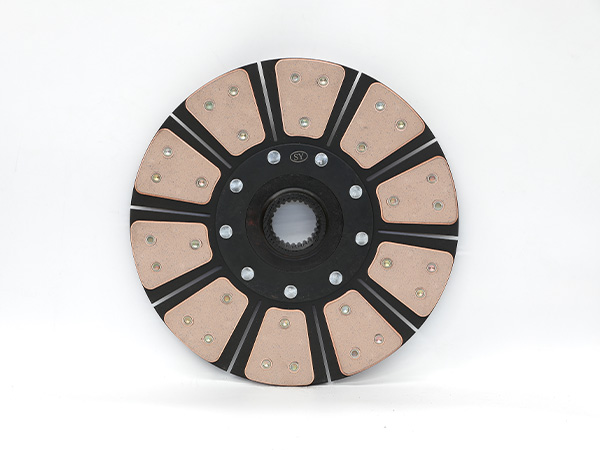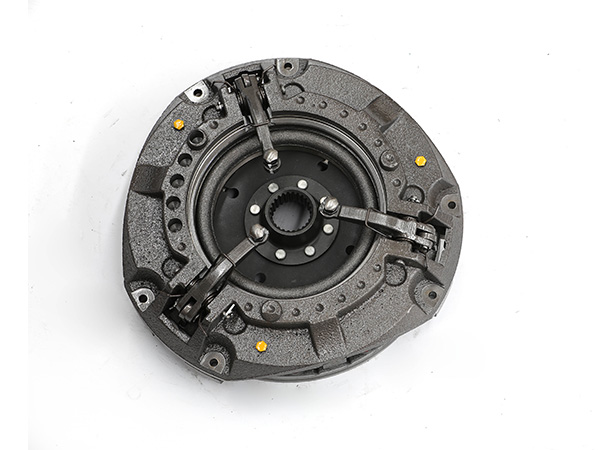The tractor engine and gearbox power transmission device is the clutch three-piece set, that is, the pressure plate, the friction plate and the release bearing. It is generally recommended that the tractor clutch three-piece set needs to be replaced after reaching the limited mileage, and the replacement cost is about ¥500. The hourly rate varies from place to place.
Sometimes, many tractors have not reached the limited mileage, and may also need to replace the three-piece clutch, so how do you judge that your clutch plate needs to be replaced?
Symptoms of a clutch plate failure
1. When you step on the clutch pedal or lift it up, you can hear the sound of metal friction or even smell the smell, which is a very obvious phenomenon of serious wear of the clutch plate;
2. I feel that the clutch stroke has changed from when I first bought the car, and the clutch joint point has become higher, which is probably due to the wear of the clutch plate;
3. It feels that the power of the car drops when climbing a hill, and the engine speed increases, but the power response is not timely, or there is insufficient power;
4. When the clutch is lifted, it is felt that the power connection is not smooth, and the car is intrusive, which is also the result of the wear of the clutch plate.
The clutch plate is an important part of the clutch. Before the clutch needs to be replaced, the wear resistance of the clutch is generally reduced due to severe friction. Therefore, when the clutch is in use, there is a jerky feeling when stepping on and lifting the clutch, so the clutch needs to be replaced at this time. In short, how often the clutch is replaced is not fixed, and the frequency of tractor clutch replacement is also different according to the service life and the driver’s driving habits and road conditions.

Tractor Clutch Replacement
Remove the clutch fixing nut and pull the clutch lever. Generally, the clutch will fall off by itself, otherwise it will have grip. Take off the release bearing and remove the separator embedded in the bearing for replacement.
Tractor Clutch Replacement Precautions
(1) When repairing and disassembling the tractor clutch components, it is not allowed to clean with sanding or dry brushes and compressed air, so as to avoid powder dust (apply a cloth dipped in water). The clutch friction plate contains asbestos fibers. If dust is generated during maintenance, the asbestos fibers in the dust will be suspended in the air, and inhaling the air containing asbestos fibers will cause serious harm to the body.
(2) When disassembling and assembling the clutch cover, use special tools to fix the flywheel, and make a mark, and tighten it in stages during installation.
(3) Insert the special tool or the input shaft of the transmission into the central spline hub and the guide bearing of the transmission input shaft to prevent the clutch disc from falling off. Also use special tools or the input shaft of the transmission to align the guide bearing of the driven plate and transmission shaft during installation.
(4) Before installing the new driven disc, put the new driven disc on the transmission input shaft to see if the spline fit is appropriate.
(5) Gradually loosen the fixing bolts of the clutch cover diagonally; gradually tighten them diagonally during installation.
(6) When installing the driven disc, the shock absorber should be facing backward, and a small amount of grease should be applied to the spline hub.
(7) When installing the clutch cover parts, if there is lubricating oil or grease on the clutch surface and pressure plate, wipe it off with a dry rag.

(8) Align the locating pin on the clutch cover with the locating pin on the flywheel, and then gradually tighten the bolts alternately. Check the rear main bearing oil seal of the engine and the front oil seal of the transmission for oil leakage. If oil leakage is found, it should be repaired.
(9) Additional lubricating oil is not required for the release bearing and transmission guide. If additional oil is added, it may cause oil stains on the clutch driven plate and cause the clutch to slip.
(10) When assembling, apply grease to the spline hub of the clutch driven disc, the leading edge of the release bearing, the inner seat of the release bearing, the release and the contact points of the push rod.
(11) Disassembly and assembly of the clutch pipeline. Pay attention to the disassembly and assembly method of the clutch pipeline, and use a double wrench, otherwise it will be easily screwed.
(12) When the friction plate is worn to the specified wear limit, the driven disc assembly should be replaced in time. To prevent the clutch from slipping and scratching the surface of the pressure plate and flywheel.
(13) Handling should be handled with care and should not be dropped. During transportation, do not lift the separation ring to avoid deformation of the torsion spring.
(14) Use it correctly to avoid clutch slippage caused by improper operation. It is strictly forbidden for the driver to step on the clutch pedal all the time. In principle, the clutch is required to be opened quickly, and once the pedal is fully engaged, the pedal should be released as quickly as possible and engaged smoothly to prevent the long-term semi-linked state. time to happen. It is not allowed to start with a large accelerator and a high gear; when shifting from a low gear to a high gear, the accelerator is engaged before the vehicle speed is high enough; starting on a steep slope several times in a row; on a muddy road, the vehicle slips or the wheels sag. Under such circumstances, the driver uses the method of increasing the accelerator and half-clutch to force the rush, etc. In this way, the clutch will generate high temperature due to continuous severe friction, resulting in burnout of the friction plate, deformation of the pressure plate and even thermal cracking, resulting in serious consequences.
.jpg)
(15) During the daily maintenance of the vehicle, the user should pay attention to the inspection of the clutch release operating mechanism, eliminate the leakage of the pump and pipeline in time, and ensure the normal operation of the clutch.
The above is all about the replacement of the tractor clutch. When operating the tractor daily, you must follow the operation essentials of one fast, two slow and three linkages, that is, when shifting gears, the clutch pedal just starts to lift quickly, and when the clutch plate reaches the semi-linked stroke When the clutch pedal is lifted, the lifting speed of the clutch pedal is slowed down. After the clutch is fully engaged, the clutch pedal is slowly lifted, and the accelerator pedal is depressed at the same time to let the vehicle start smoothly.
Secondly, in the process of driving, we should pay attention to stepping on the clutch pedal only when shifting gears and braking at low speed, and do not step on the clutch pedal in other situations, because some drivers like to put their feet on the pedal for a long time during driving. On the clutch pedal, doing so will accelerate the wear of the clutch plate, resulting in damage to the clutch plate. The only way to ensure that the clutch plate will not wear abnormally, affecting its service life.
For more information on the cost of tractor clutch repair, click to visit:
Tractor clutch friction disc replacement
How much does a tractor clutch replacement cost and how to replace it?


